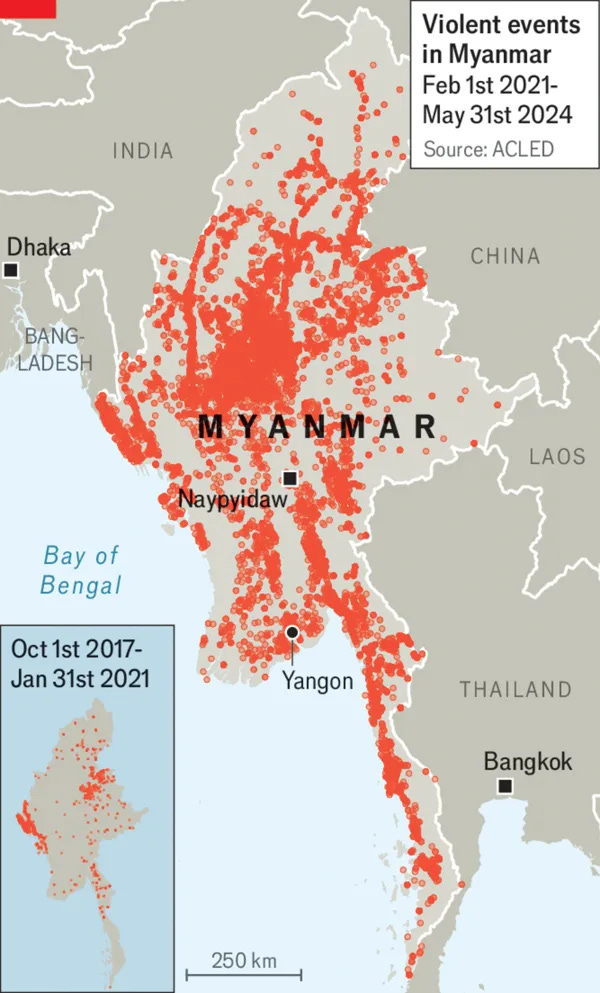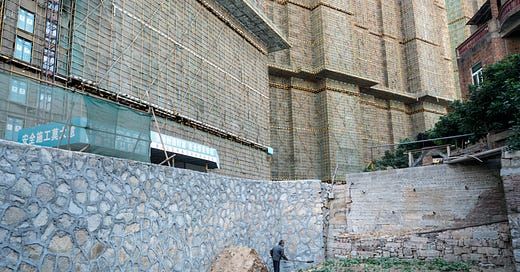WORLD & GEOPOLITICS
MYANMAR - Myanmar’s civil war, which has been intensifying since the military coup in February 2021, is largely overlooked by the international community despite being the most violent globally (with 3 million displaced people and rising). The conflict is part of a long history of military dominance in Myanmar, a country with over 135 ethnic groups, each with its own armed faction and longstanding grievances against the central government.

The 2021 coup ousted the civilian government led by Aung San Suu Kyi, triggering nationwide protests and a brutal crackdown by the military. Over three years of fighting has seen the rise of powerful resistance coalitions, such as the Brotherhood Alliance, which comprises ethnic militias representing the Rakhine, Kokang, and Ta’ang peoples with ties to China. This alliance and other resistance groups have achieved significant territorial gains, reducing junta control to a mere 14% of Myanmar’s territory and 33% of its population, primarily in urban areas. The Arakan Army, a Buddhist-majority rebel group, has also captured substantial areas and also faces accusations of war crimes against the Rohingya Muslim minority. Some contend that these “ethnic armies” are consolidating control over their regions, focusing on autonomy rather than overthrowing the junta (in other words, there is a push for a confederation of autonomous zones rather than a federal democracy). Others also argue that these groups draw inspiration from Wa State, a self-governing region on the Chinese border. International actors, including neighbouring countries like India, Thailand, and Bangladesh are also adjusting their policies to better interact with these de facto military authorities, recognising that this approach serves their own security interests.




